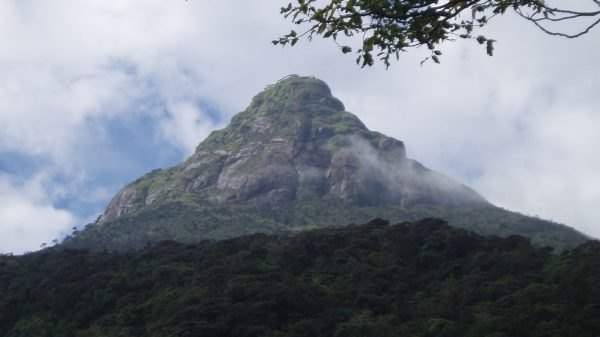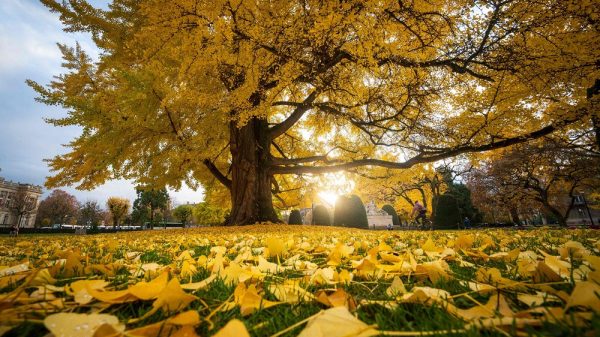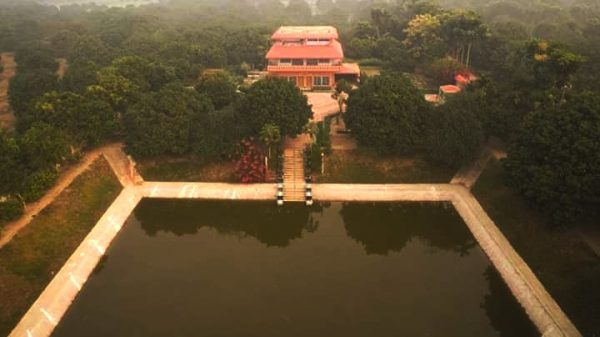Sri Lanka, shrouded in mystery, is a witness to ancient tradition with places of great reverence for the people of all religions.
The most sacred Adam’s Peak is in the center of the miracle. It is on the top of a conical mountain located in central Sri Lanka. The mountain is located in the southern reaches of the central highland in Ratnapura district. This 2243-meter-tall peak is referred to as a sacred place. It is not Sri Pada’s geological particularities that have made it so famous but it is something else. On the summit, there is a boulder with a mysterious indentation on it resembling a human footprint.
The enormous footprint on the stone is venerated by Buddhists, Hindus, Christians, and Muslims and a number of pilgrims visit the place every year from all the faiths. In Sanskrit literature, the peak has been mentioned as Mount Lanka, Malayagiri or Mount Rohana. In Tamil, it is called Svargarohanam meaning (The asset to heaven) while the Portuguese call it Pico de Adam and in English “Adam’s Peak.”
The peak is well known for The Sri Pada (sacred footprint) a 1.8meter (5 feet 11 inches) after which the peak is named. According to Kasas al- Anbia being expelled out from heaven Adam Alaihias Sallam landed in Sri Lanka and Hawa Alaihias Sallam landed in Hejaz in Saudi Arabia. So it is believed by the Muslims that the footprint is of the first father Hazrat Adam and the peak is named after him. On the other hand, the Buddhists believe it to be the footprint of Lord Buddha. According to their belief, this footprint was formed when Lord Buddha left for heaven from the peak. In Srilankan Hindu tradition, it is claimed to be of Hanuman or Shiva. According to their belief when Hanuman was looking for Sita in Lanka, he set fire to the land and jumped on the peak and left his footprint there. The Christians believe it to be of Adam or St Thomas, One of the twelve Apostles of Christ.
The peak has some other mythical names as Mount Malaya and from Sanskrit sources, its names include Mount Lanka, Ratnagiri, Malayagiri etc. To the locals, it is also known as the abode of Saman (Deity of good mind). The mountain is located in the southern part of the central highland in the district of Ratnapura and Nuwara Eliya district of the Sabaragamuwa province. It is said that the peak was first discovered by King Valagambahu in (104-76 BC) while he was in exile in the mountain wilderness. This conical-shaped peak has endless views of small streams with waterfalls and celestial sight to behold. The holy footprint is located on a stone with a height of eight feet. The length of the footprint is 5 feet 7 inches long with a width of 2 feet 6 inches. According to Buddhist mythology, it was discovered three hundred years before Christ.
Every step of this mountain has a secret. Reaching the sacred footprint on the hilltop is a daunting adventure. But those who take the risk are overwhelmed by the sight of the footprint. The peak is visited every year by many pilgrims of all faiths.
Adam’s Peak is also important for its geographical position and its unusual lofty height with unequal beauty. The central highland when viewed looks like a pinnacle on the verdant castle wall. The abundant precipitation feeds the four major rivers which all have their sources on the mountain’s lower slopes. Here the south and eastern parts are the world’s most of the richest gem mining areas. Rubies, topaz, garnets, cat’s eye, aquamarine, and sapphires ranging in colour from yellow to blue are found here over the eons.
We know about it from Ibn Battuta when he wrote that he saw the mountain “rising into the heavens like a pillar of smoke.” It is true in the sense that it can be seen rising above the horizon nearly eighty miles before the coastlines come. The first Western reference to Sri Pada is in Ptolemy’s geography where it is called Valspada the first specifically Christian mention of it is found in Valentinus’ Pistis Sophia.
Even today it is an important pilgrimage site, especially for Buddhists. Pilgrims walk up to the mountain following some difficult routes climbing thousands of steps that require several hours.
The pilgrimage is taken from December to May. The rest of the months are not suitable because there is heavy rain, extreme wind and thick mist at that period. The main pilgrimage season is in April to avail the opportunity to enjoy the sunrise when the distinctive shape of the mountain casts a triangular shadow on the surrounding plain and moves quickly as the sun rises.






























Leave a Reply